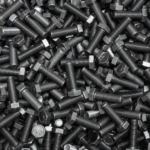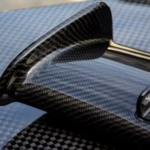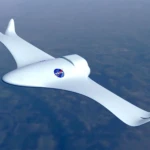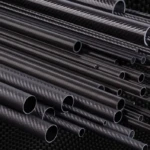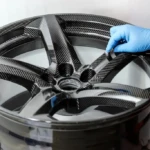Why do we think that titanium alloys are a material difficult to treat? Because there is a lack of in -depth understanding of its treatment mechanism and its phenomena.
1 and 1 physical phenomena of titanium treatment
The cutting force during the treatment of titanium alloys is only slightly higher than steel with the same hardness, but the physical phenomenon of treatment of titanium alloys is much more complicated than that of the transformation of steel , which means that the treatment of titanium alloys faces enormous difficulties.
Most titanium alloys have a very low thermal conductivity, only 1/7 of steel and 1/16 of aluminum. Consequently, the heat generated during the cutting of the titanium alloy will not be quickly transferred to the room or removed by the chips, but will be concentrated in the cutting zone, and the temperature generated can reach 1000 ° C, causing The point of the tool to wear and crack quickly and the chip accumulation tumors are generated, and the wear blades appear quickly, which in turn generates more heat in the cutting zone, shortening more the lifespan of the tool.
The high temperature generated during the cutting process simultaneously destroys the integrity of the surface of titanium alloy parts, resulting in a decrease in the geometric precision of the parts and a phenomenon of hardening of the process which seriously reduces its resistance to fatigue.
The elasticity of titanium alloys can be beneficial for separation performance, but during the cut, the elastic deformation of the part is an important reason for the vibration. The cutting pressure means that the “elastic” part leaves the tool and the rebound, which means that the friction between the tool and the part is higher than the cutting effect. The friction process will also generate heat, which worsens the poor thermal conductivity of titanium alloys.
This problem is even more serious when processing parts with thin or ring -shaped walls. Since the room material is pushed by the tool, the local deformation of the thin wall has exceeded the elastic range and the plastic deformation occurs, the resistance to the material and the hardness of the cutting point are considerably increased. Currently, the treatment at the originated cutting speed becomes too high, causing the tool more.
“Heat” is the “guilty” for the difficulty of treating titanium alloys!
2. Titane alloys treatment techniques
On the basis of understanding the mechanism of treatment of titanium alloy and combined with past experience, the main techniques of treatment of titanium alloys are as follows:
(1) Use a geometric insert at positive angle to reduce the cutting force, cutting heat and deformation of the parts.
(2) Maintain a constant diet to avoid hardening of the part.
(3) Use high -pressure and high speed cutting fluid to guarantee thermal stability of the processing process and prevent the room surface degeneration and damage caused by tools due to excessive temperature.
(4) Keep the sharp and blunt tools on the edge of the blade are the reasons for thermal accumulation and wear, which can easily cause the tool.
(5) as soft as possible in titanium alloy, as the material becomes more difficult to treat after hardening, and thermal treatment increases the resistance of the material and increases the wear of the blade.
(6) Cut with a large radius of the tip or chamfer, and put as much blades as possible in the cup. This reduces the cutting force and the heat to each point and prevents local rupture. During the grinding of titanium alloys, the cutting speed has the greatest impact on the life of the VC tool among each cutting parameter, followed by the number of radial tools (milling depth).
3. Start with the blade to solve the problem of titanium treatment
The wear and tear of insertion grooves during titanium alloy treatment is the local wear of the rear and the front in the direction of the cutting depth, which is often caused by the hardened layer left by the pre -treatment . The chemical reaction and the diffusion between the tool and the room material at a treatment temperature exceeding 800 ℃ is also one of the reasons for the wear of the groove. Because during the processing process, the titanium molecules of the part gather in the front area of the blade and are “welded” with high pressure and high temperature blade to form a chip accumulation tumor. When the accumulated chips are peelled off from the blade, the blade carbide coating is removed, therefore the titanium alloy treatment requires special blade material and geometry.
4. Tool structure adapted to titanium treatment
Treatment of the titanium alloy is heat, and a large amount of high pressure cutting fluid should be sprayed on the tip of the tip in a timely and precise way to quickly remove heat. There are unique strawberry structures specially used for the treatment of titanium alloys on the market.
Daguang focuses on providing solutions such as precision CNC machining services (3-axis, 4-axis, 5-axis machining), CNC milling, 3D printing and rapid prototyping services.

